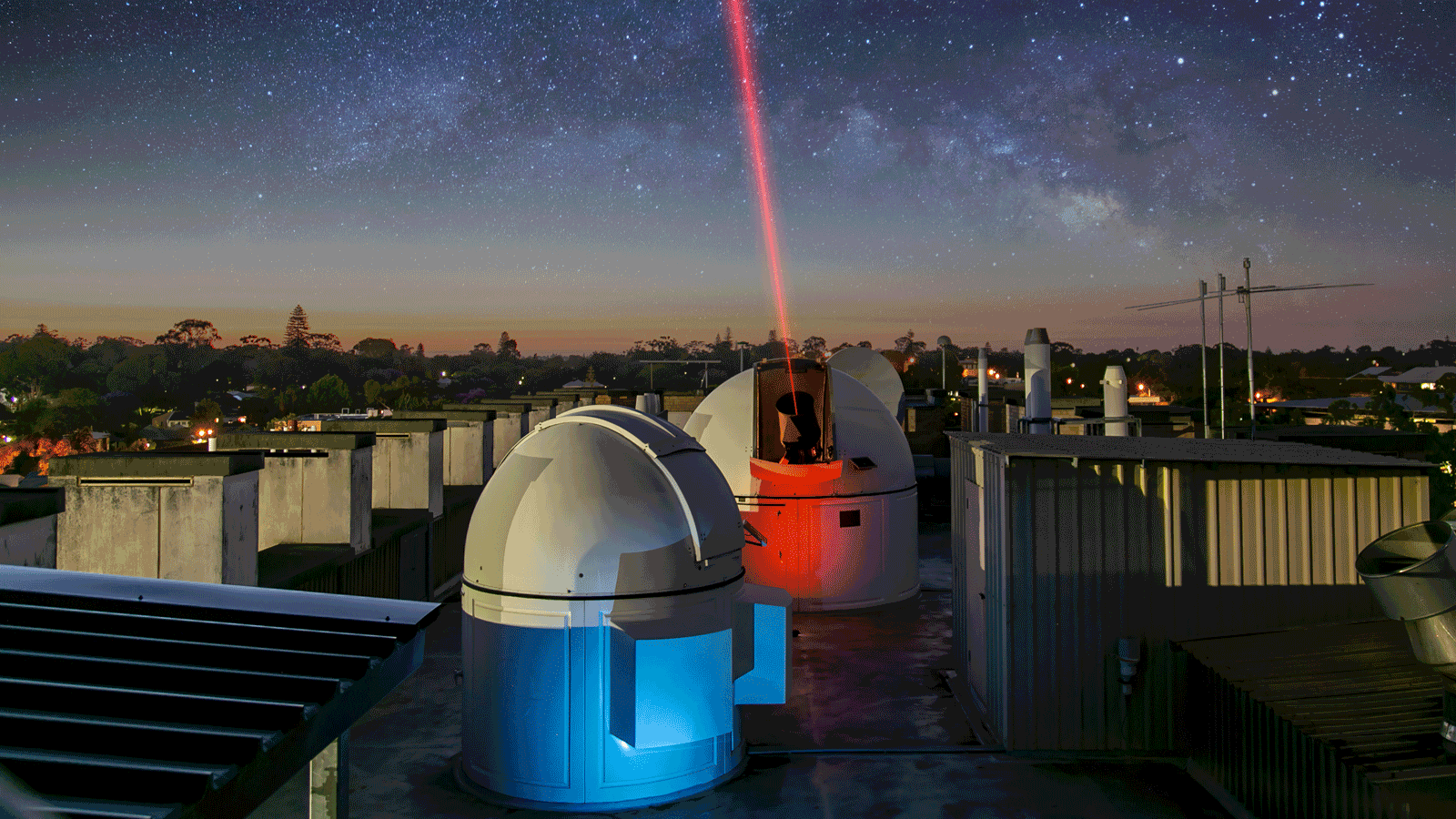
Jack Loughran Tue 16 Jul 2024
Collected at: https://eandt.theiet.org/2024/07/15/laser-communication-system-promises-1000-fold-speed-boost-satellites
Earth-bound lasers sending data to orbiting satellites will increase communication speeds with space 1,000-fold, researchers have said.
A team from the University of Western Australia (UWA) has developed TeraNet – a network of optical ground stations specialising in high-speed space communications. The network received laser signals from OSIRISv1, a laser communication payload aboard a German satellite developed by the University of Stuttgart.
The signals were detected using two of the TeraNet optical ground stations during fly-bys of the satellite last Thursday.
“This demonstration is the critical first step in establishing a next-generation space communications network across Western Australia,” said Sascha Schediwy, associate professor at UWA. “The next steps include joining this network to other optical ground stations currently being developed in Australia and across the world.”
The TeraNet ground stations use lasers, instead of traditional wireless radio signals, to transfer data between satellites in space and users on Earth. Lasers can potentially transfer data at 1000s of Gbps, because they operate at much higher frequencies than radio, so much more data can be packed into every second.
Wireless radio technology has been used to communicate from space since the launch of the first satellite, Sputnik 1, nearly 70 years ago, and the technology has remained relatively unchanged since then.
As the number of satellites in space has grown, with each new satellite capable of generating more data, there is now a critical bottleneck in getting data back to Earth.
But the downside of laser communication signals is that they can be interrupted by clouds and rain. The TeraNet team has established a network of three ground stations spread across Western Australia to mitigate this. This means that if it’s cloudy at one ground station site, the satellite can download its data to another site with clear skies.
One of the two TeraNet ground stations that received the satellite laser signal is built on the back of a custom-built Jeep truck, so it can be rapidly deployed to sites that need ultra-fast space communications.
The researchers said that TeraNet could support multiple international space missions operating between low Earth orbit and the Moon.
The network comprises a ground station at UWA, a second at the Mingenew Space Precinct 300km north of Perth, and a mobile ground station that is being commissioned at the European Space Agency’s New Norcia facility.
Nasa began trialling laser-based internet connections as part of its ILLUMA-T project on the International Space Station in 2021. Last year it was able to achieve blisteringly fast speeds of around 600Mbps.

Leave a Reply